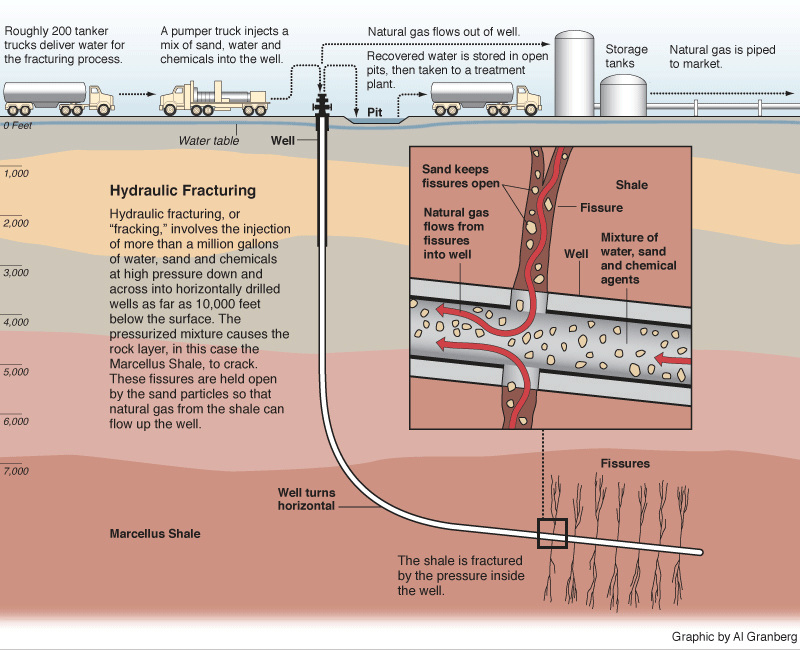Let's analyze the reportedly dramatic and recent surge of earthquakes in Oklahoma. From this Reuters report dated July 28, 2015:
OKLAHOMA CITY (Reuters) - Several earthquakes shook Oklahoma on Monday as the state experiences a sharp increase in the frequency of tremors linked to wastewater disposal from gas and oil drilling, including from fracking, state and federal officials said...
Noticeable quakes - above magnitude 3.0 - now hit the state at a rate of two per day or more, compared with two or so per year prior to 2009. During the past seven days, Oklahoma has experienced about 40 earthquakes, according to the USGS.
Fracking, aka hydraulic fracturing, is a technique for getting natural gas and oil out of deep-rock formations. The USGS has a FAQ devoted to fracking. Here's a handy news illustration from Al Granberg for ProPublica:
In 2013, Reuters reported on a spate of Oklahoma earthquakes and included some numbers about the volume of wastewater in fracking operations (emphasis added):
Since 2009, the volume of wastewater from oil and gas work injected deep into underground disposal wells has also risen, up about 50 percent in 2012 from the level seen during most of the first decade of the century, with the last couple of years showing the biggest jumps.
The quake activity is a far cry from four years ago when the state had but 20 rumblers of 3.0 and above. And from 1991 to 2008 there were no more than three quakes a year of that size in the state.
But the increase is not unique to Oklahoma:
The concern is not unique to Oklahoma. Since 2001 the average annual number of earthquakes of magnitude 3.0 or greater has jumped "significantly" across the midsection of the country, including not just Oklahoma but also Ohio, Arkansas and Texas, according to the U.S. Department of Interior.
And not far from Oklahoma, the Dallas-Fort Worth area has seen a jump in quake activity. From CNN in May 2015:
According to the U.S. Geological Survey, the Dallas area has suffered almost 40 small earthquakes (magnitude 2.0 or higher) since the beginning of this year, the latest a magnitude-2.7 quake near Farmers Branch on Saturday. Many of the epicenters were recorded in Farmers Branch and Irving, with a couple to the south in Venus.
Hadley Wickham's ggplot2 book is the best book you can read on both working with ggplot2 and understanding the grammar of graphics.
Mapping in R using the ggplot2 package (zevross.com)
Beautiful plotting in R: A ggplot2 cheatsheet (zevross.com)
R maps - Filter coordinates out when plotting points in map - Stack Overflow (stackoverflow.com)
